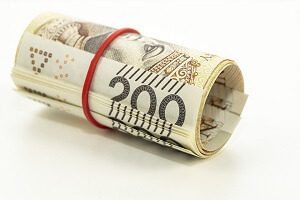Commercial Property Insurance Cost
Last Updated on November 22, 2022
Written by CPA Alec Pow | Content Reviewed by ![]() CFA Alexander Popinker
CFA Alexander Popinker
You know your business is safe when you have protection against the risks that may arise at any time. No two businesses are alike, so this insurance can be customized to the needs of your particular case. Whether you work in the hospitality industry, footwear production, or construction if you have stocks or properties that you want to protect.
The best way to avoid a loss is by having Commercial Property Insurance. You can rest easy knowing that your business will be just fine because when you get this coverage.
How Much Does Commercial Property Insurance Cost?
The costs of Commercial Property Insurance are different from business to business as these are not all the same. It must be said that Commercial Property Insurance coverage can be offered also in a business owner’s policy. Business owners can save costs by putting together Commercial Property Insurance and General Liability Coverage.
The average costs per year for a small business owner are around $550 and a major corporation would have to pay around $500,000.
For one million dollars coverage, the average business has to pay anywhere between $1,100 and $3,200. The majority of businesses have annual costs under $1,000 for this insurance.
For instance, the expenses for a middle size landscaping enterprise with 20 to 30 employees are anywhere between $3,100 and $5,100 because of the storage space and increased equipment risks.
Commercial Property Insurance details
 That coverage made to protect the commercial properties is called Commercial Property Insurance. This insurance covers the costs associated with damages caused by fire, natural disasters, lost revenue, repair costs, theft, and equipment malfunctions.
That coverage made to protect the commercial properties is called Commercial Property Insurance. This insurance covers the costs associated with damages caused by fire, natural disasters, lost revenue, repair costs, theft, and equipment malfunctions.
Commercial Property Insurance is necessary for any business that has physical assets which are vital to the revenue stream. Even though, these policies can represent an important cost to your business you should not consider them a maybe and leave the company open to vulnerabilities.
Business owners can choose from three different types of insurance:
Special Form Policy that offers coverage for everything, except something that is mentioned specifically to be excluded.
Basic Form Policy is often enough for most businesses. It offers coverage for vandalism, natural disasters, theft, smoke, and fires.
Broad Form Policy offers, besides the basic policy, coverage for water damage, falling objects, collapsing constructions, the weight of ice or snow.
However, Commercial Property Insurance does not cover everything. The personal assets, commercial vehicles, or employee wages would not be covered by a standard policy. Also, the damages that could appear due to the disasters pointed below are not covered.
- Some Types of Fires: situations when the damages caused by fire are covered by insurance, are the ones when the fire does not appear inside the building. On the other hand, if the fire started due to a stove, the costs would not be covered.
- Certain Smoke: standard policies cover the damages caused by smoke, but these are not covered if the smoke appeared due to an employee’s mistake.
- Earthquakes: this risk is not covered by all policies, but there are some insurance companies that may add this to your plan. If not, you would have to call an earthquake authority insurance to have this risk also covered.
- War: The majority of the insurance companies do not include in their policies the damages that may appear due to war.
- Weather: a standard Commercial Property Insurance policy would never cover the damages caused by floods.
Important things to consider
When setting the price for a Commercial Property Insurance policy there are some factors to consider such as:
Exposure: The geographical area where the business is located has a great influence on the price. For example, if it is in an area with a high crime rate the rates are going to be higher.
Construction: The materials the building is made of, as well as its features, are important, For instance, the costs can go down if there is an HVAC system or construction is made of fire-retardant materials.
Protection: Also, the costs can be reduced if there is a sprinkler system and alarms installed. For example, if there is a fire hydrant or fire station close to the company it will be better.
Occupancy: Rates depend on the people who occupy the company during office hours. The costs are higher for companies with many employees and increased foot traffic because the risk of a disaster happening is higher.
Risks: The insurance company will make a risk evaluation for the building and business before giving a price offer.
What are the extra costs?
At first glance, coinsurance may sound like a confusing term. Coinsurance is the percentage that an insurer will require a consumer to pay when purchasing insurance for their commercial building.
For instance, if the building is valued at $700,000, you must have at least $525,000 in coverage for a policy with a 75% coinsurance clause.
The exact amount can be established when the damage is caused, which can make things a little complicated. You may have to pay a penalty if the insured amount is under the coinsurance percentage.


Leave a Reply
Want to join the discussion?Feel free to contribute!